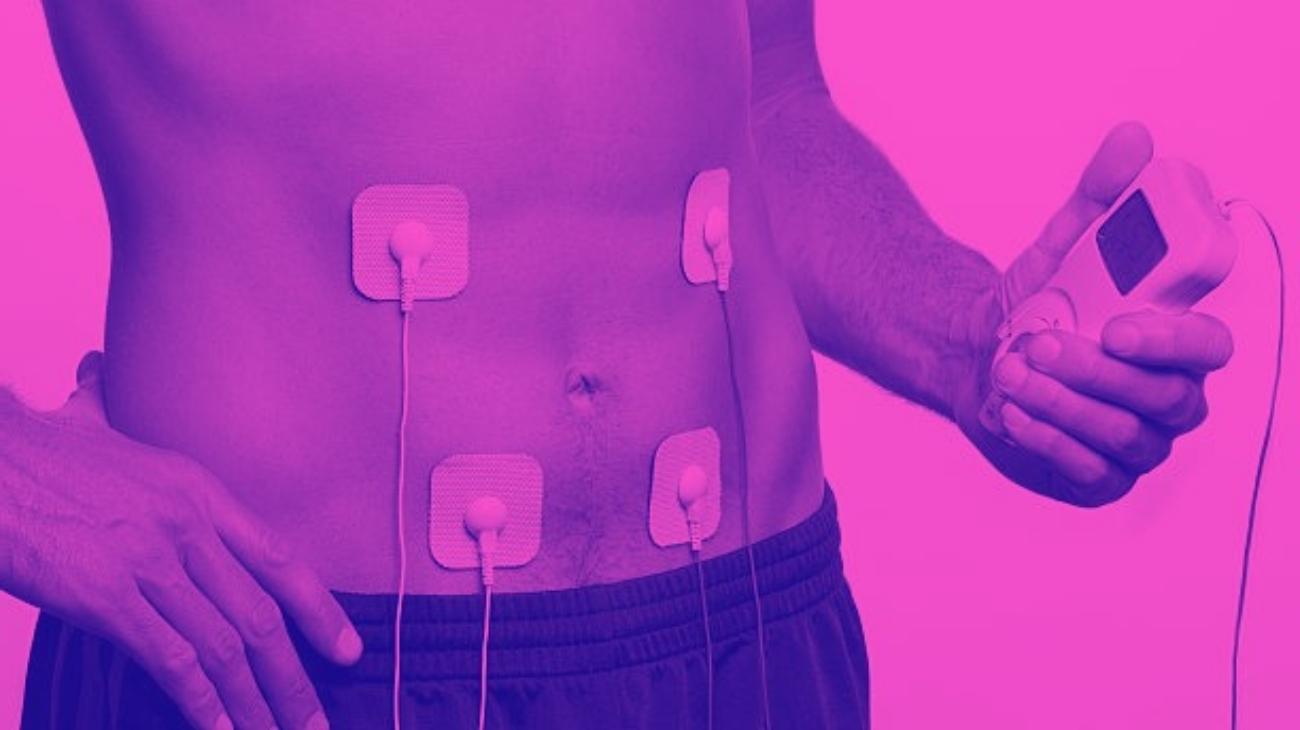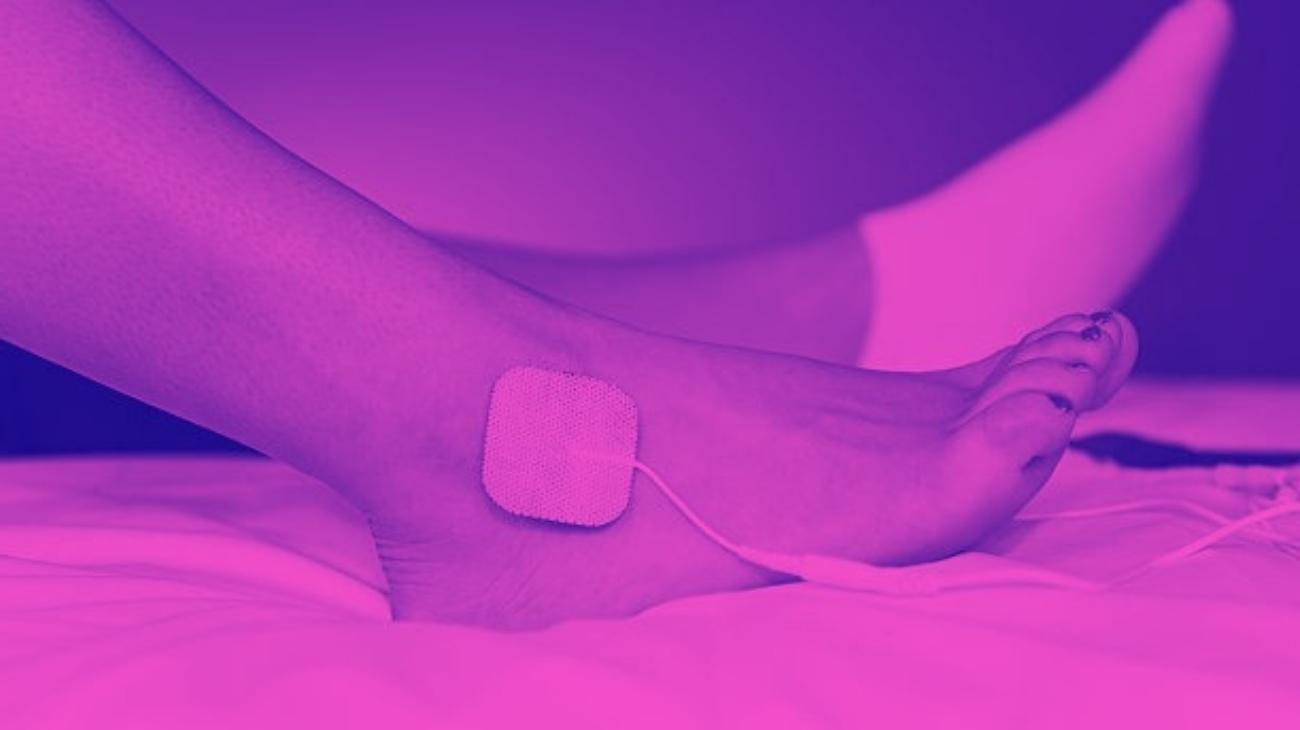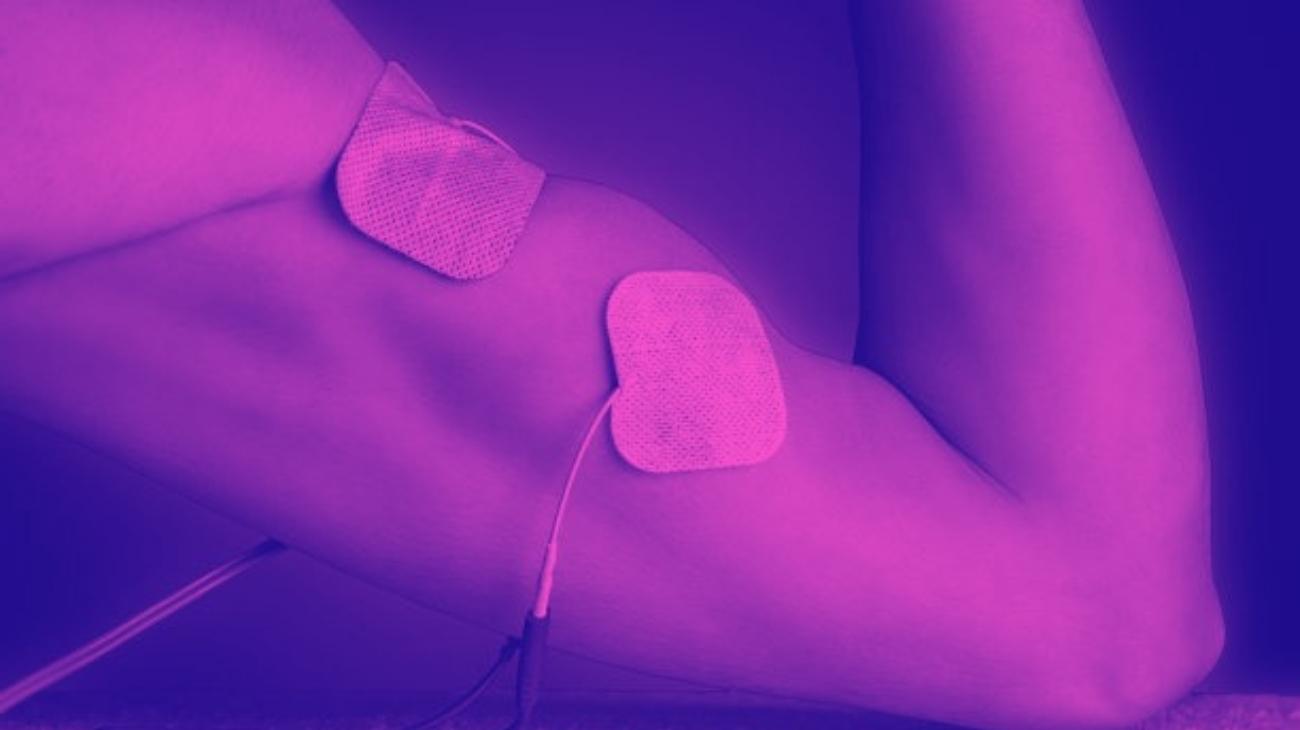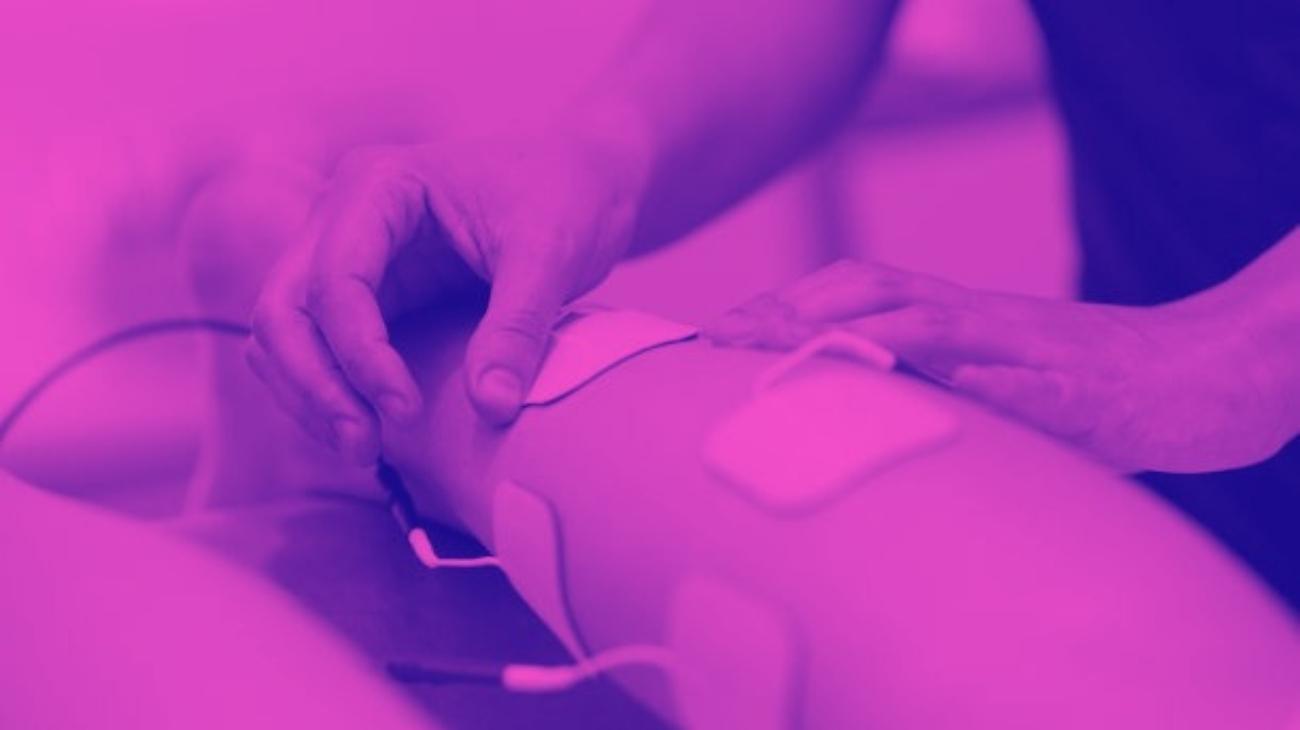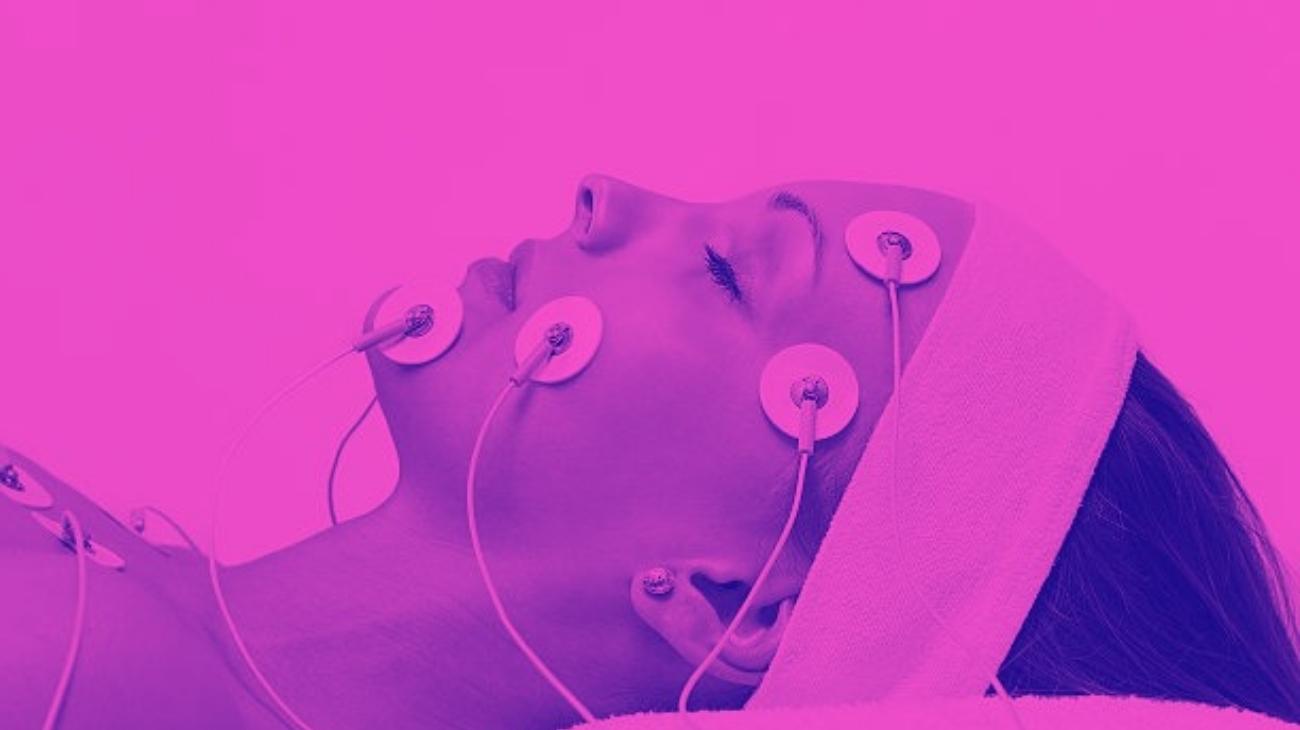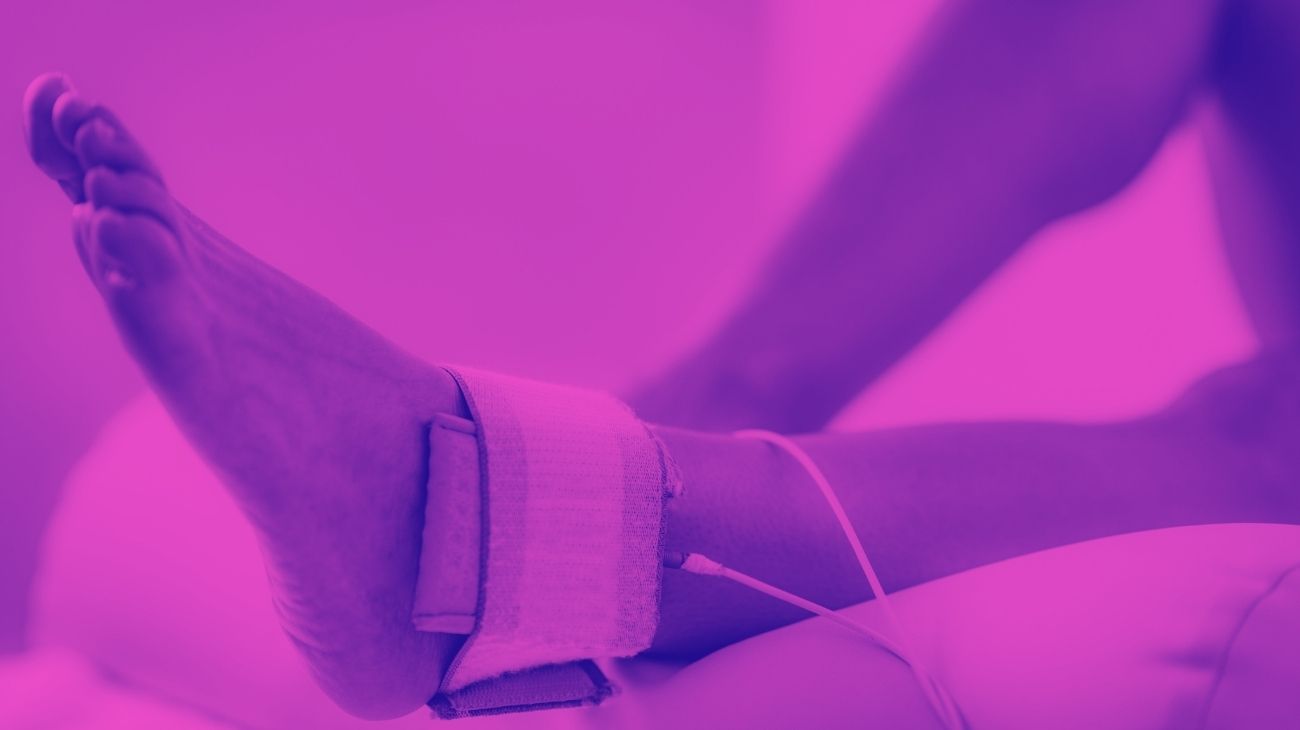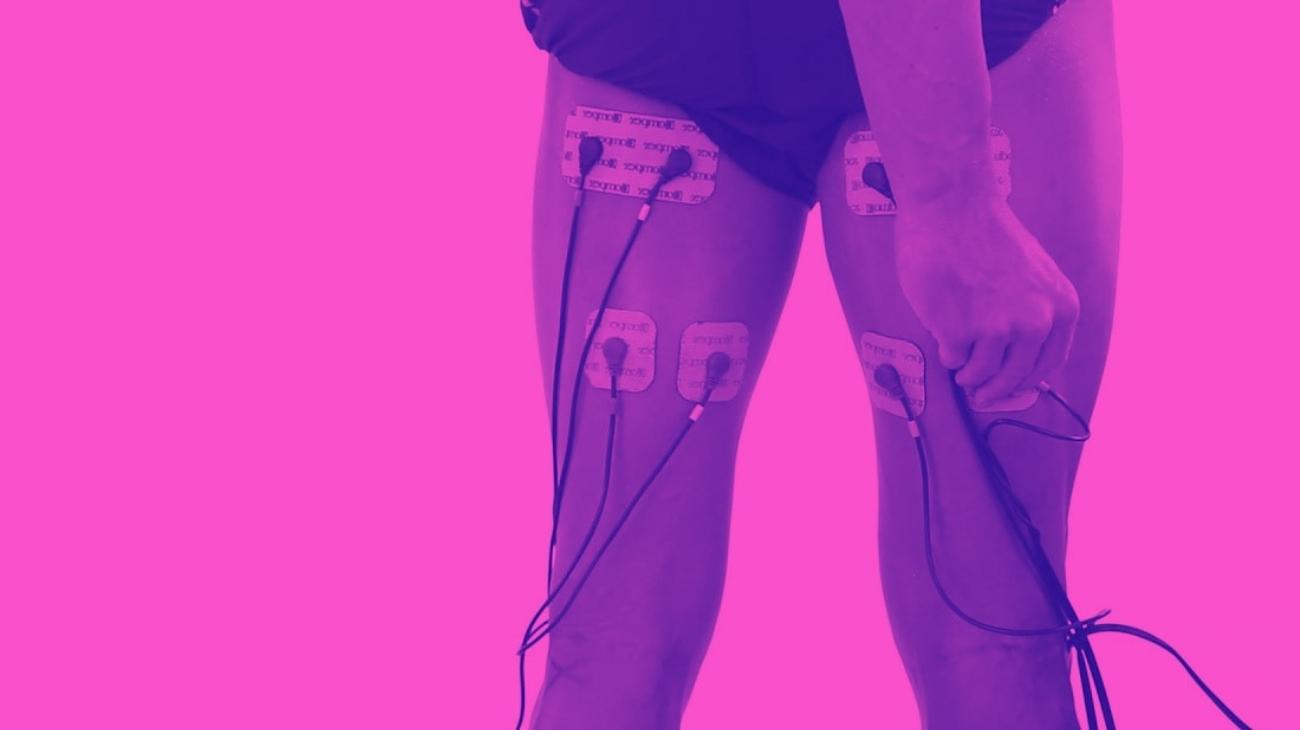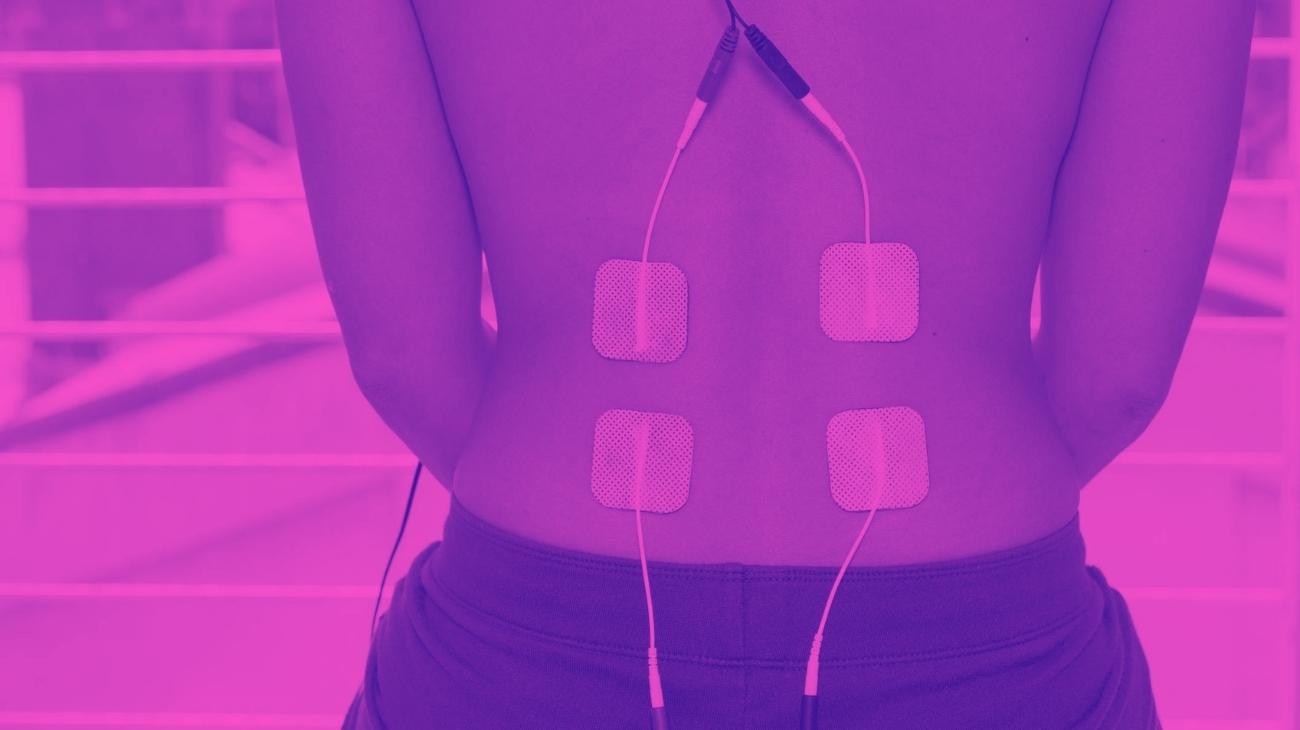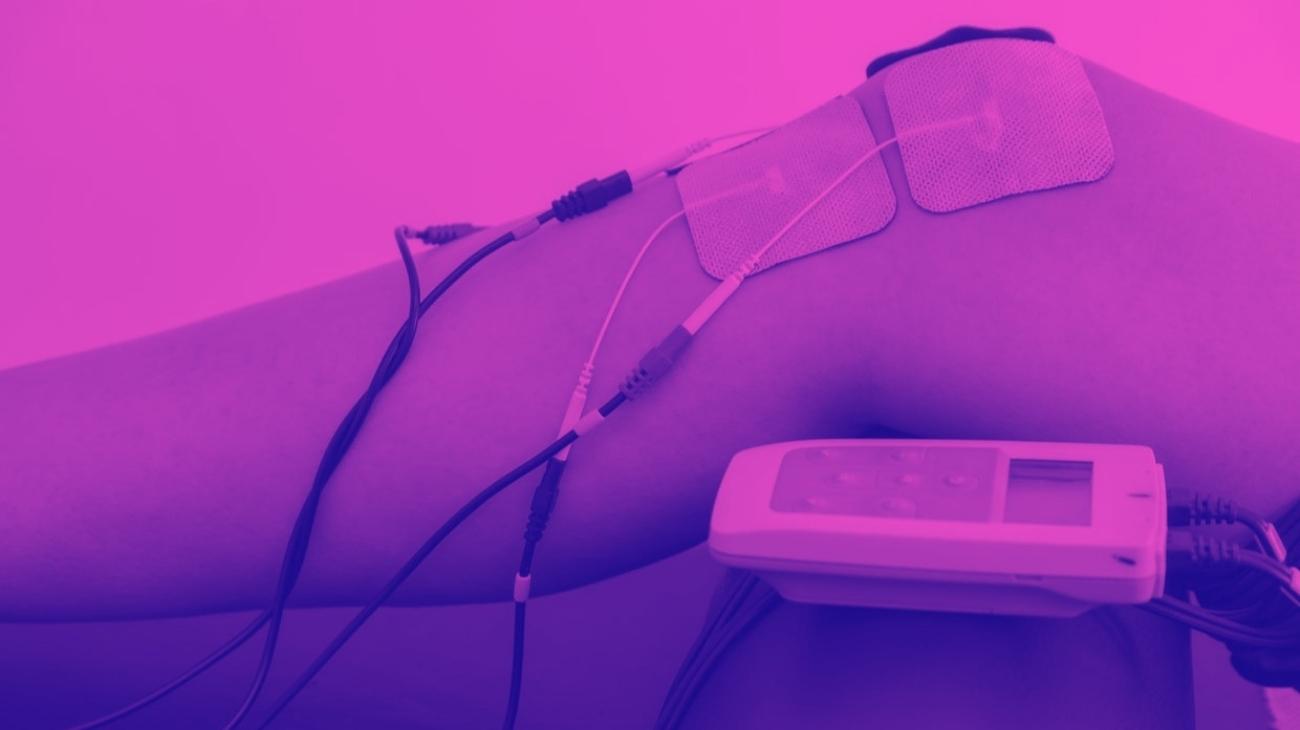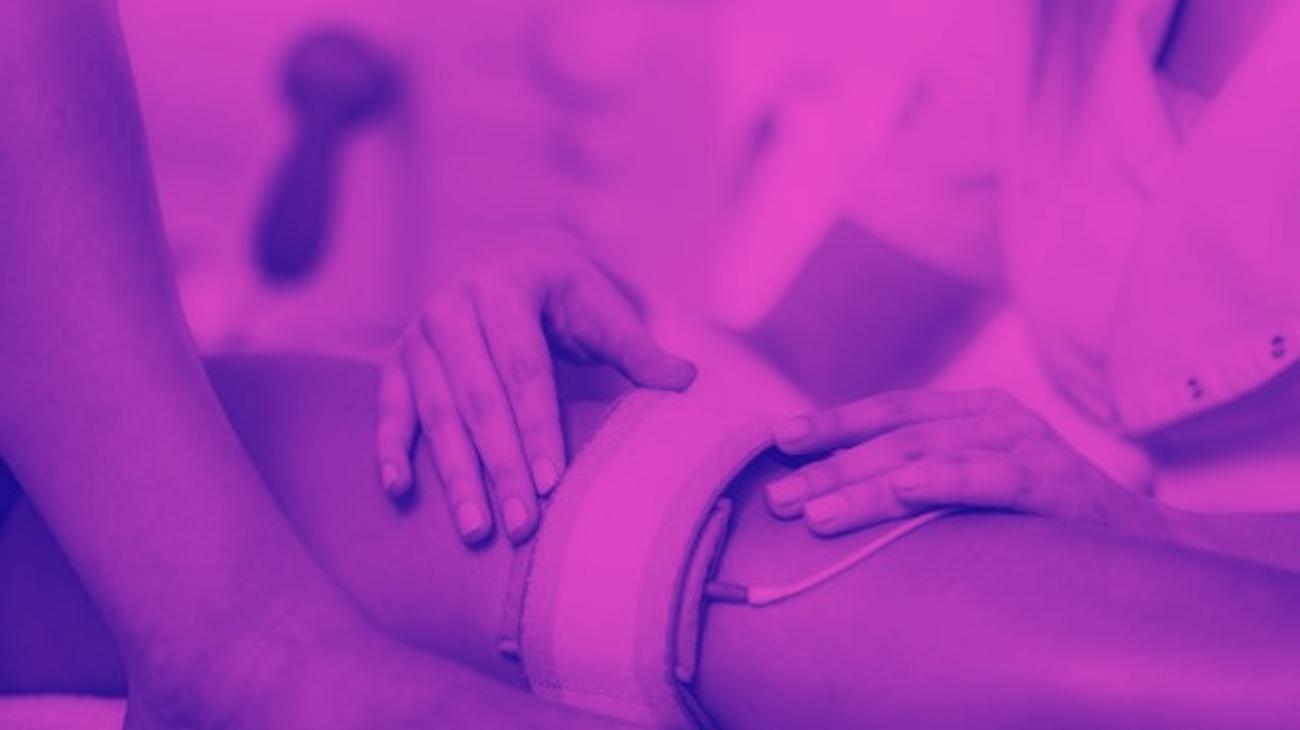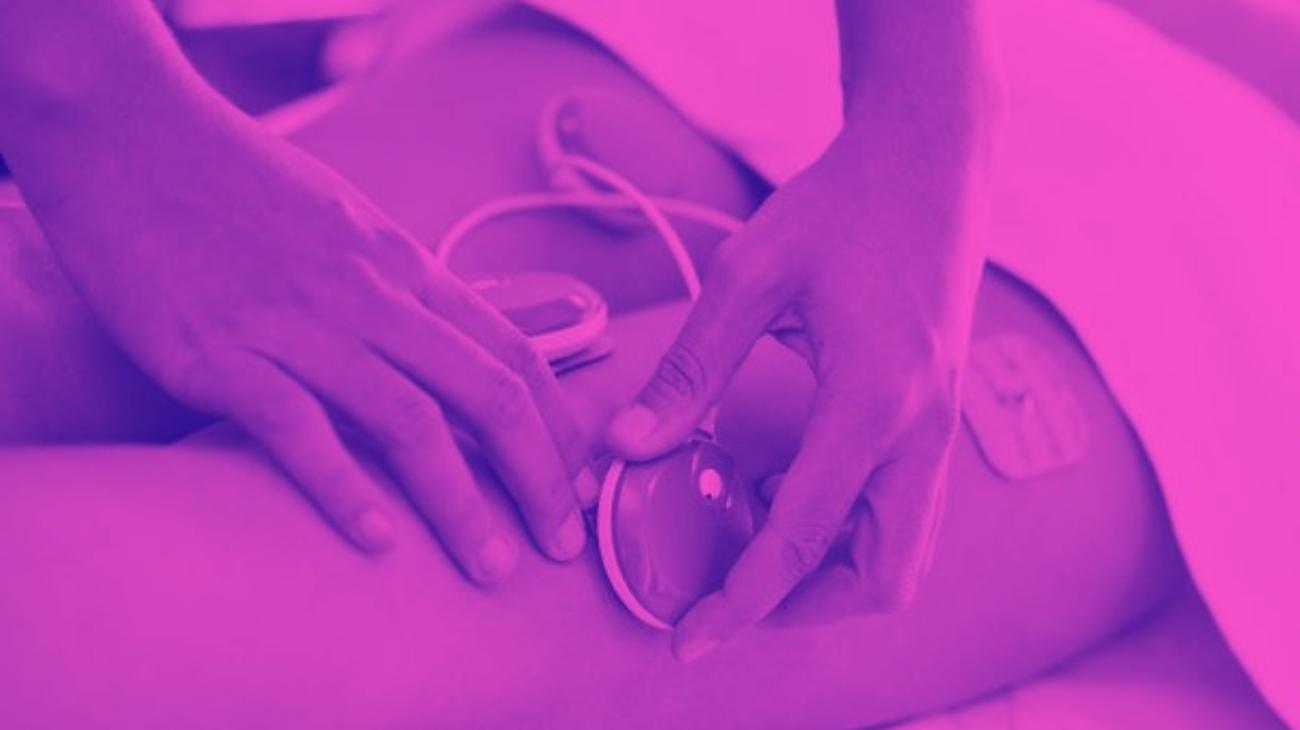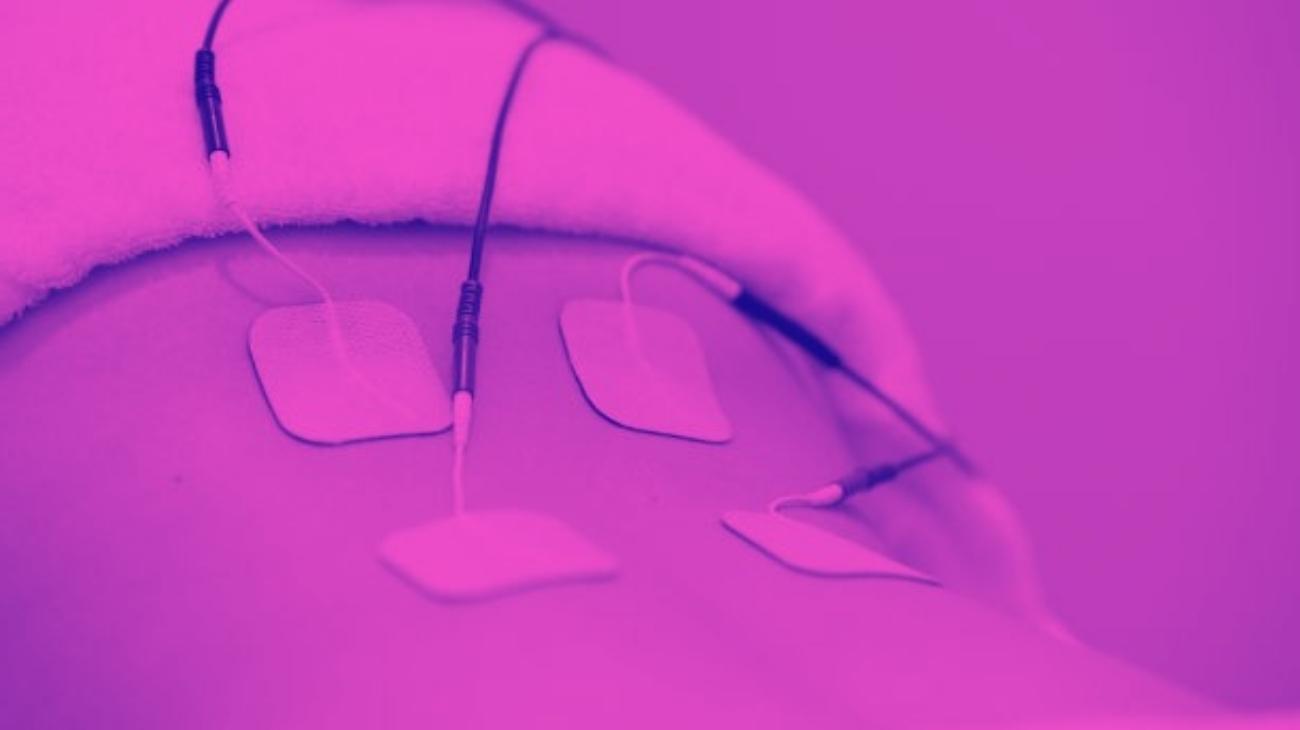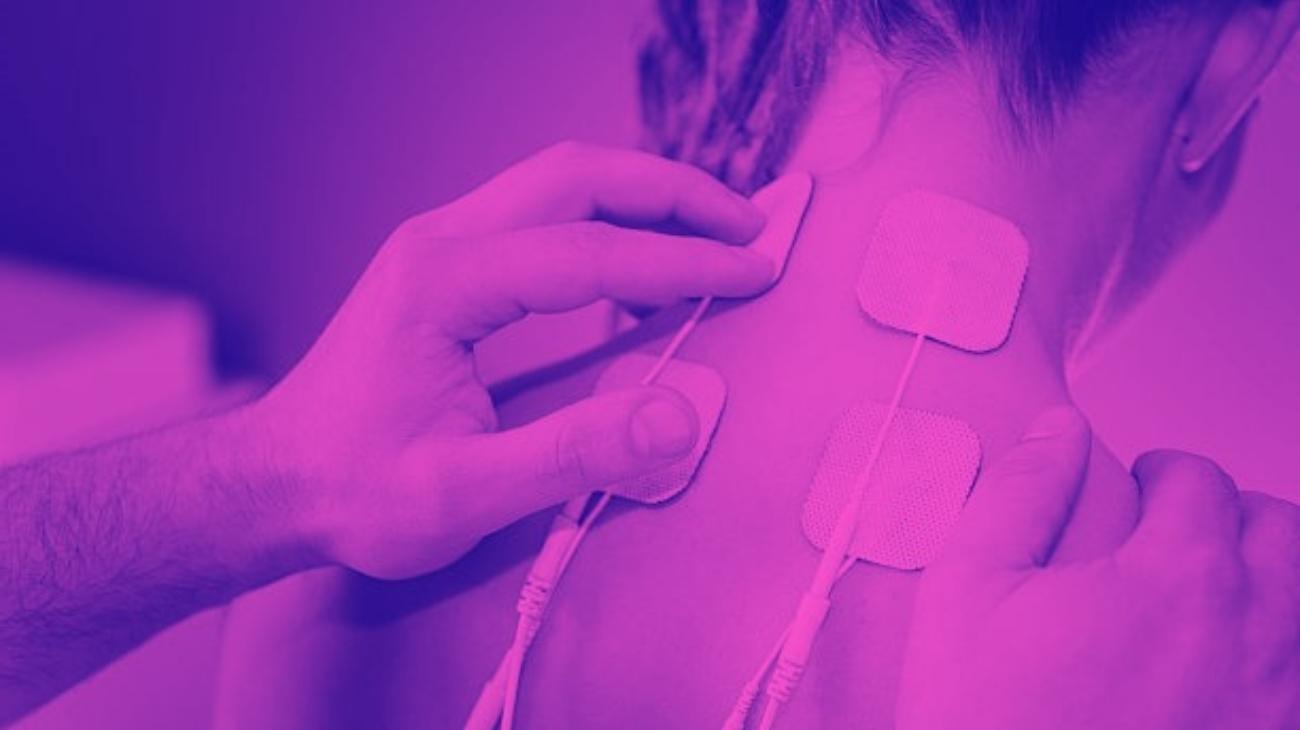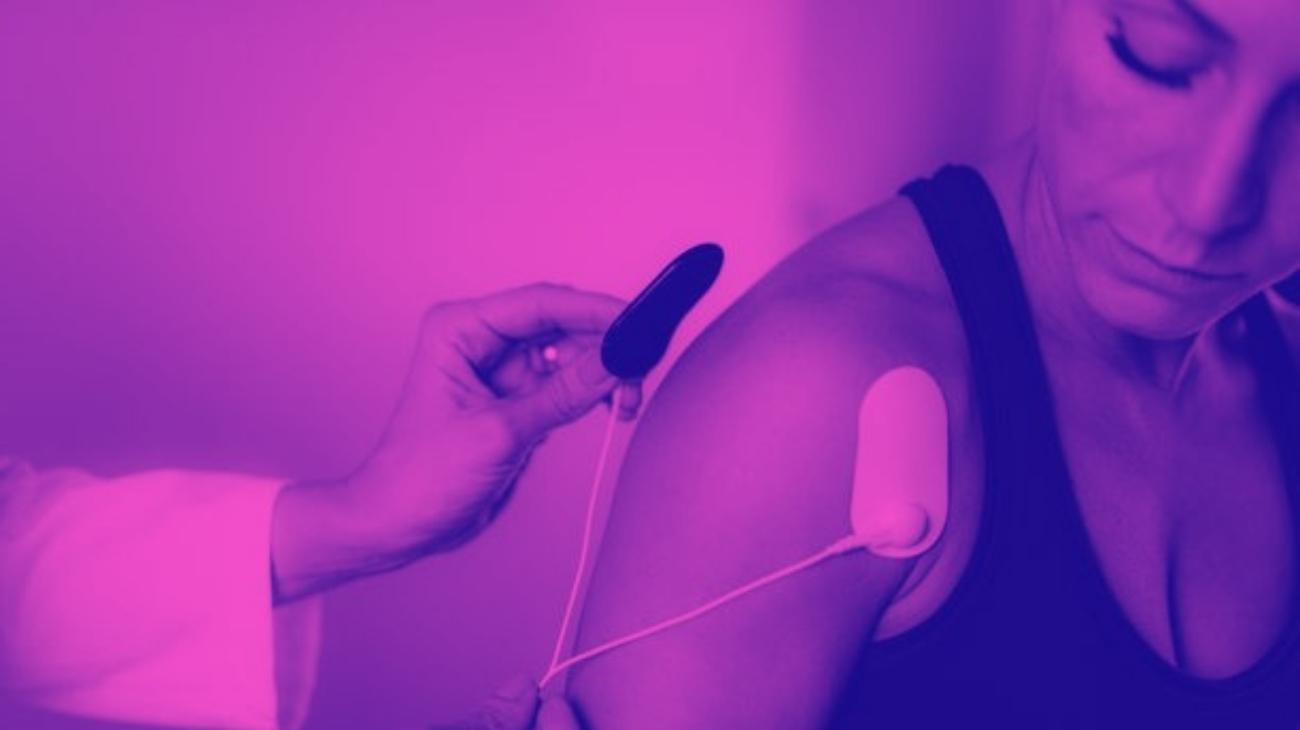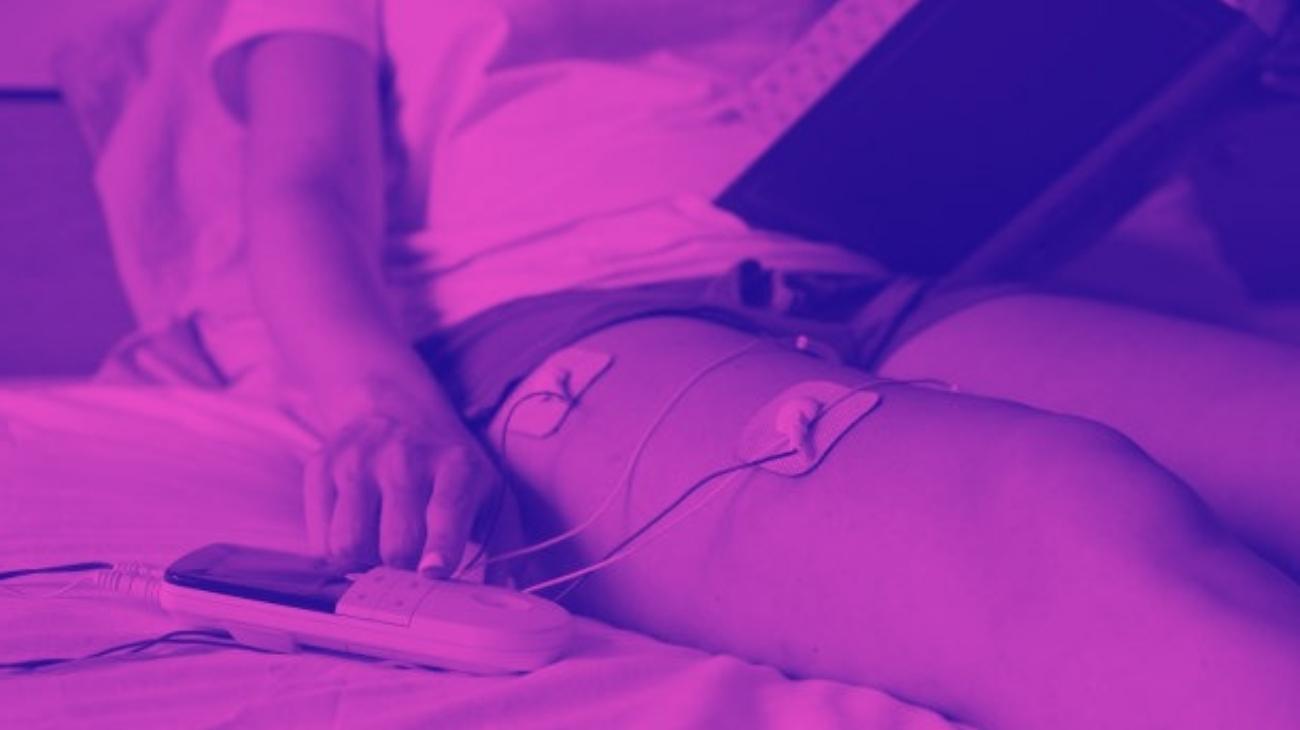- How to use a TENS machine to relieve arm pain?
- Best TENS Machines for Forearm Injury Recovery
- How to use an EMS muscle stimulator for biceps and triceps?
- Best EMS electrostimulators to strengthen arm muscles
- Video: How to place electrodes pads on arms and forearms?
- More types of EMS electrostimulators and TENS machines you should know
- Most common types of arm and forearm injuries
- Differences between TENS and EMS: Which one to use for arm pain?
- Contraindications in the use of electrodes and electrotherapy
The arms and forearms occupy most of the upper extremities, being indispensable in most of the daily tasks we perform, and even more so in the practice of high impact sports such as baseball, soccer or tennis. This exposes them to many injuries that cause acute pain that sometimes becomes even unbearable, affecting people's quality of life.
To treat these pains, electrotherapy makes available to people the TENS and EMS currents, which together can achieve a perfect balance between pain relief during recovery from injuries, and muscle strengthening to minimize the chances of suffering them in the future. Here are all the ways they can help you improve the health of your arms and forearms.
How to use a TENS machine to relieve arm pain?
TENS therapy is one of the most widely supported therapies worldwide for relieving joint and muscle pain, with hundreds of nerve studies affirming its effectiveness and even considering it a useful tool for speeding up recovery processes by making them more pleasant for its users.
Among the main uses and benefits we can highlight the following:
- Raises the pain threshold: the transcutaneous current intercepts the pain receptors located in the ulnar, median and radial nerves, altering their natural charge so that they need more information to send a signal to alert the brain of pain, increasing the threshold and the patient's resistance to it.
- Limits pain-producing cells: once an impact or movement that generates pain occurs, the body creates nociceptors, spinal cells that flow through the nerves until they reach the spinal cord, which then sends the pain signal to the brain. Transcutaneous current alters the functioning of these cells to prevent them from easily reaching the receptors of the median, ulnar or radial nerve, as well as minimizing their production, causing the pain to gradually stop.
- Alterations in the reciprocal innervation: when we feel pain in the forearm or arm, the body automatically generates an involuntary muscle contraction in the biceps, triceps or flexor muscles of the forearm, which can increase the severity of the pain. TENS therapy prevents these responses by making it easier for the muscle to come to rest and the sensation of relief is achieved more quickly.
- Vasodilation: when using TENS, we will have a warm sensation on the skin of the arms and forearms, which will dilate blood vessels allowing greater oxygenation of the sore tissue, which in turn has an analgesic effect that will help relieve pain faster.
These characteristics make TENS therapy extremely useful for relieving pain in arms and forearms caused by injuries such as:
- Tendonitis
- Median nerve impingement
- Radial nerve impingement
- Ulnar nerve impingement
- Carpal tunnel syndrome
- Elbow or wrist osteoarthritis
- Myofascial pain syndrome
It should be noted that although TENS will work to relieve pain momentarily, it cannot replace the treatment indicated by the specialist, since electrotherapy is not a curative method. That is, it will work to relieve pain in the arms and forearm, but it will not recover from the injury that causes the pain, so as long as you do not treat the cause, the pain will continue to appear.
Best TENS Machines for Forearm Injury Recovery
Here are some of the best transcutaneous nerve stimulation devices that will help relieve most arm and forearm pain to ease the injury recovery process.
- Type: TENS
- Channels: -
- Modes/Programs: 5 Modes
- Intensity: 7 Levels
- Wireless: Yes
- Heat Therapy: No
- Battery: Rechargeable lithium (up to 24 hours)
- Electrodes: 4 Pads
- Display: No display
- Size: 13,5cm x 7,4cm
- Long battery life (up to 24 hours)
- Portable and small size
- User manual included
- Wireless electrodes
- Reduces pain symptoms
- No display included
- Not suitable for muscle hypertrophy
- Does not specify weight
It has 7 intensity levels and 5 massage modes for instant pain relief in a natural and completely drug-free way. Its rechargeable lithium battery provides 24 hours of continuous use on a single charge, and can be charged via its USB connectors. Undoubtedly a complete revolution in the massage experience that you can keep in your pocket and take anywhere thanks to its small size.
- Type: TENS
- Channels: 2
- Modes/Programs: 9 Programs
- Intensity: 15 Levels
- Wireless: Yes
- Heat therapy: No
- Battery: Rechargeable
- Electrodes: Not specified
- Display: Digital
- Size: Not specified
- Improves blood circulation
- Includes user manual
- Accelerates recovery from sports injuries
- Portable and small size
- Includes carrying bag
- No heat therapy
- No battery life specified
- Size and weight not specified
It has a wide variety of pre-programmed modes of use designed to treat a wide range of ailments. Its compact size makes it incredibly convenient to carry wherever you want, and its specialized long-lasting electrodes can be washed and reused up to 150 times. The purchased package contains 1 OMRON E3 electrostimulator, 1 electrode cable and 1 long-lasting pad.
- Type: TENS
- Channels: Not specified
- Modes/Programs: Not specified
- Intensity: Not specified
- Wireless: Yes
- Heat Therapy: No
- Battery: Rechargeable Lithium (300mAh)
- Electrodes: 4 Pads
- Display: Digital
- Size: Not specified
- Reduces pain symptoms
- Includes user manual
- Improves joint mobility
- Portable device
- Improves blood circulation
- Does not include carrying bag
- Does not specify channels and modes/programmes
- Does not specify intensity levels
One of its best features is the presence of a laser line for the nose that will allow you to treat rhinitis symptoms effectively, improving your health conditions considerably. The dual channel function of this rechargeable mini TENS machine allows you to treat multiple parts of the body simultaneously, bringing benefits such as improved circulation, reduced pain and accelerated metabolism.
- Type: Combo
- Channels: Dual
- Modes/Programs: 16 Modes
- Intensity: 20 Levels
- Wireless: Yes
- Heat Therapy: No
- Battery: Rechargeable Lithium
- Electrodes: 8 Pads
- Display: Digital
- Size: Not specified
- TENS+EMS combo
- Reduces pain symptoms
- Includes user manual
- Rechargeable battery
- Portable and small size
- No size and weight specified
- Battery life not specified
- No touch screen included
It has 16 programmed modes and 20 intensity levels, ranging from acupuncture and shiatsu to vibration and tuina, among many other modalities designed to treat different types of pain, relieve stress and increase the production of endorphins to relieve pain in a completely natural way.
- Type: Combo
- Channels: Dual
- Modes/Programs: 70 Programs
- Intensity: 50 Levels
- Wireless: Yes
- Heat Therapy: No
- Battery: 3 AAA Batteries
- Electrodes: 4 Pads
- Display: Digital
- Size: Not specified
- TENS+EMS combo
- Improves blood circulation
- Improves joint mobility
- Includes user manual
- Portable and small size
- Does not specify dimensions and weight
- Battery operated
- Touch screen not included
This powerful electro-stimulator offers immediate relief for almost any type of ailment using stimulation methods that stimulate the production of natural analgesic agents within the body. It also works as an effective methods to accelerate muscle growth and regeneration, making it one of the most complete and versatile electrostimulation units on the market.
How to use an EMS muscle stimulator for biceps and triceps?
EMS therapy uses currents of different frequencies that act at a muscular level, stimulating the nerve in a different way since it does not interfere with its sensory functions, but stimulates it to achieve a natural contraction of the muscle.
This simple action has multiple benefits such as the following:
- Strengthening and muscle toning of biceps, triceps and muscles that make up the forearm, which although it does not completely replace traditional training, can help maintain fitness in people who do not have much time to go to training centers.
- Reduction of fatigue, by getting the muscle fibers of the biceps, triceps and forearm extensors to reduce their oxygen consumption, which will make their resistance to fatigue much higher. This is one of the main advantages of EMS therapy that make it a favorite of athletes around the world.
- It improves the power of the muscles since less oxygen is needed in the muscle fibers so that they can be activated faster when they are needed for an explosive movement or intense weight lifting at the maximum of their capabilities.
- Stops the loss of tissue due to a sedentary life or little use of the upper limbs, which eventually weakens the muscle fibers of the biceps, triceps and other muscles that compose it.
- Improved blood flow due to the dilation of blood vessels during the session. This will increase the assimilation of nutrients and oxygen for healthier and more resistant muscles in the arms and forearms.
Best EMS electrostimulators to strengthen arm muscles
Below we share with you a list of the best EMS muscle electro stimulators that you can use to strengthen your biceps, triceps and forearm extensors, thus reducing the chances of suffering from injuries in your upper extremities.
- Type: EMS
- Channels: 4
- Modes/Programs: Not specified
- Intensity: Not specified
- Wireless: No
- Heat Therapy: No
- Battery: Rechargeable
- Electrodes: 4 electrodes
- Display: Digital
- Size: 22 x 32 x 20 cm; 249gr
- Prevents muscle atrophy
- Improves joint mobility
- Improves blood circulation
- Portable and small size
- Includes user manual
- Not for pain relief
- No specified modes or programmes
- No intensity levels specified
The Compex Sport 4.0 has 10 conditioning programs, 5 recovery massage programs, 8 pain management programs, 2 rehabilitation programs and 5 fitness programs. All these features make it the perfect electrostimulator for athletes who practice their sport 3 to 4 times a week, for injury prevention and fast recovery from injuries.
- Type: Combo
- Channels: Dual
- Modes/Programs: 16 Modes
- Intensity: 20 Levels
- Wireless: Yes
- Heat Therapy: No
- Battery: Rechargeable Lithium (up to 10 hours)
- Electrodes: 4 Pads
- Display: Digital
- Size: Not specified
- Rechargeable battery
- Accelerates recovery from sports injuries
- Includes user manual
- Reduces pain symptoms
- Improves blood circulation
- Transport bag not included
- Does not specify measurements and weight
- No heat therapy
This combination device is ideal for pain relief and can also be used as a massager to relieve persistent tension. It is a non-pharmacological alternative to relieve pain and tension for people suffering from muscular, chronic, nerve and even some acute pain. For those who wish to tone and firm their muscles, the EMS mode of the device stimulates the muscles and improves their performance. For sedentary people, the device promotes local blood circulation.
- Type: Combo
- Channels: 2
- Modes/Programs: 10 Programs
- Intensity: 20 Levels
- Wireless: No
- Heat Therapy: No
- Battery: Rechargeable Lithium
- Electrodes: 8 Pads
- Display: LCD
- Size: 8,3cm x 6,3cm x 0,5cm
- Reduces pain symptoms
- With adjustable timer
- Accelerates recovery from sports injuries
- Includes carrying bag
- Improves blood circulation
- No battery life specified
- No weight specified
- No heat therapy
It features 10 pre-programmed massage modes and 20 intensity levels that target different types of ailments and injuries. It has a session timer function that allows you to adjust the duration of the sessions and has a lithium battery that allows you to apply therapy for more than 20 consecutive hours.
- Type: Combo
- Channels: -
- Modes/Programs: 15 Programmes
- Intensity: Not specified
- Wireless: Yes
- Heat Therapy: No
- Battery: Rechargeable Lithium
- Electrodes: 2 Pads
- Display: No display
- Size: Not specified
- TENS+EMS Combo
- Control from the mobile app
- Rechargeable battery
- Includes user manual
- Reduces pain symptoms
- No battery life specified
- No intensity levels specified
- Does not specify dimensions and weight
It has more than 10 preset programmes designed for muscle stimulation, improved recovery and pain relief, thanks to its revolutionary Smart TENS stimulation technology. The package includes a pre-loaded device, 2 sets of pads, 1 set of cables, 1 USB charger and a portable case.
- Type: Combo
- Channels: Dual
- Modes/Programs: 25 Modes
- Intensity: 50 Levels
- Wireless: Yes
- Heat Therapy: No
- Battery: Rechargeable Lithium (up to 10 hours)
- Electrodes: 10 Pads
- Display: Digital
- Size: Not specified
- Rechargeable battery
- Prevents muscle atrophy
- Portable and small size
- Improves joint mobility
- TENS+EMS Combo
- Does not specify dimensions and weight
- Transport bag not included
- Touch screen not included
The 50-level intensity allows you to explore for another unique experience, while the preset timer can be easily adjusted from 5 to 60 minutes. Safe enough to relax at home or in the office. Hydrogel with multi-layer technology, reusable 70 to 110 times when used correctly. Built-in rechargeable lithium battery, 10 hours continuous use after a full charge with USB cable.
Video: How to place electrodes pads on arms and forearms?
Electrodes for arms
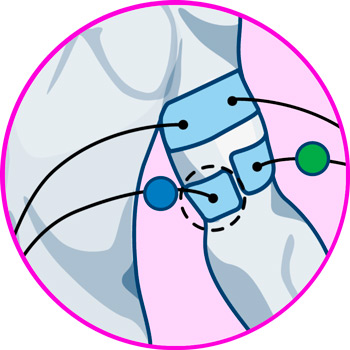
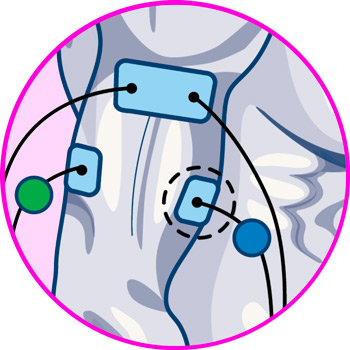
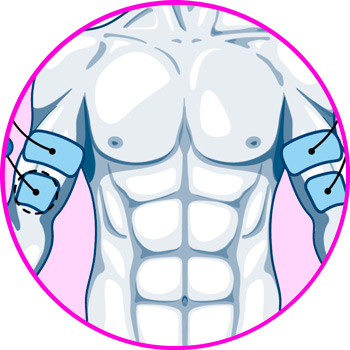
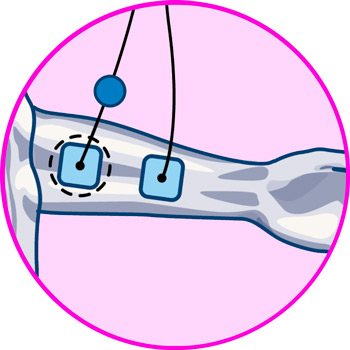

- For biceps pain: For biceps pain we proceed to place one pad on the upper part of the muscle, just at the limit where it joins with the deltoid, while the other goes on the lower part where it joins with the end of the biceps ligament that joins with the elbow.
- For triceps pain: For the triceps the procedure is similar, one electrode is placed on the upper head of the muscle where it joins the deltoids of the shoulder, while the other just on the upper part of the elbow without being over the joint.
- For tennis elbow: To treat injuries such as tennis elbow, one pad is placed on the brachioradialis muscle located on the outer side of the elbow, while the other is placed on the inner side of the elbow on the carpal flexor muscle.
- Biceps training: To train the biceps, we proceed to flex the elbow so that the muscle is retracted, and position one just below the junction with the deltoids of the shoulder, and the other at the junction with the biceps ligament, without touching the joint.
- Triceps training: For the triceps the position of the first electrode goes on the upper part of the lateral head of the muscle, and another one on the lower part of it. While for training the other zones of the muscle, one electrode is positioned on the medial head of the triceps, and another in the middle part of the long head of the muscle.
- Forearms training: For the forearms, a pad is placed on the external side of the elbow just on the brachioradialis muscle, and another one lower down on the medial part of the same. After finishing the session, the electrodes are placed on the carpal flexor following the same principle; one just below the internal lateral side of the joint, and the other in the middle area of the muscle.
More types of EMS electrostimulators and TENS machines you should know
Most common types of arm and forearm injuries
Tennis players, boxers and basketball players all have in common that for 100% of the time during which they compete, they are using their arms, and in fact, even those of us who are not athletes are constantly using them, which exposes us to suffer from ailments such as the following:
- Lateral epicondylitis: known as tennis elbow, this condition occurs when the ulnar collateral ligament, which joins the forearm muscle with the epicondyle to flex the elbow, is irritated to the point of becoming inflamed, which generates a sharp pain when moving the joint. It is caused by the constant performance of repetitive movements such as a racket backhand or the constant flexion of the elbow when bouncing the basketball against the floor.
- Bursitis of the elbow: it is the inflammation of the synovial fluid bag that is in the union between the humerus with the radius and the ulna, forming the elbow joint. This may occur due to wear and tear caused by repetitive movements, or by a blow when trying to break a fall with the hand.
- Nerve impingement: the radial, ulnar and median nerves are found along the arm. This injury occurs when one of them is compressed or irritated, generating a constant pain that can be felt throughout the arm from under the armpit or over the shoulder to the fingertips.
- Elbow sprain: occurs when the joint is forced to perform an unnatural movement, causing the ulnar and radial collateral ligaments, as well as others that stabilize the mobility of the elbow, to overextend and suffer a partial or total tear, which will manifest itself with joint inflammation and acute pain for several weeks, limiting the functionality of the joint.
Differences between TENS and EMS: Which one to use for arm pain?
Electrotherapy is a treatment that uses low and high intensity currents to achieve a nervous response that benefits the patient's health at a nervous and muscular level. From this principle, both TENS transcutaneous nerve stimulation and EMS muscle electrostimulation are born.
The former uses currents on the skin to reach the nerves and have a direct effect on the sensation of pain, slowing down the nerve functions that manifest it to provide a sensation of localized relief.
EMS uses currents that reach the muscle directly in order to achieve a muscle contraction that simulates that which is naturally achieved when using a muscle group in the gym. In this way, muscle strengthening can be achieved without the need to go to a training center.
This makes this therapy a viable alternative for people who want to be in shape but do not have time to go to the gym, or athletes who want to extend their training time without sacrificing hours of the day.
In other words, the ideal therapy for pain relief is TENS, which will intercept the nerve signals that travel through the median, ulnar and radial nerves to inform the brain of the sensation of pain. This is achieved by acting on the medullary cells responsible for communicating the cause of pain in the muscle or joint, and slowing down their production to increase the threshold of pain endured by the user.











